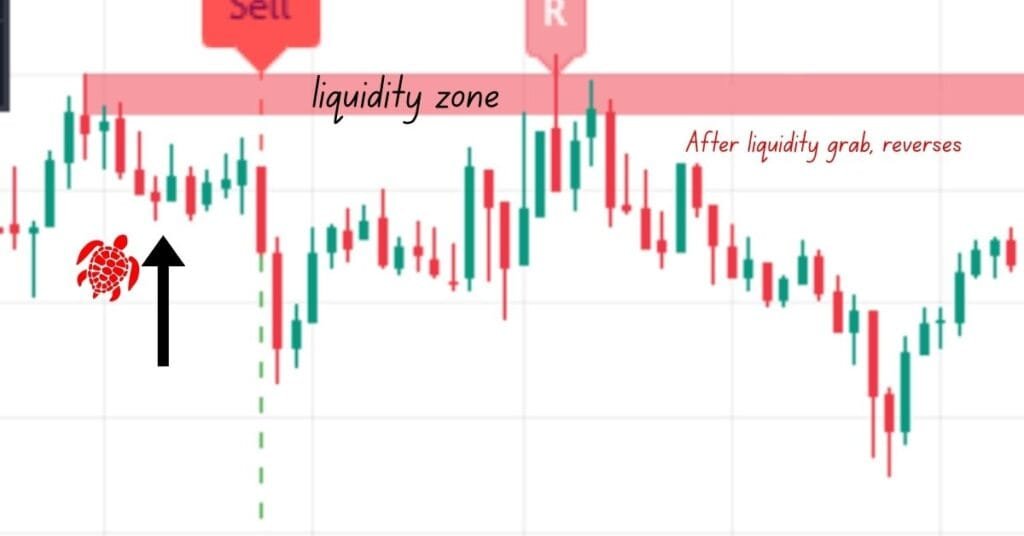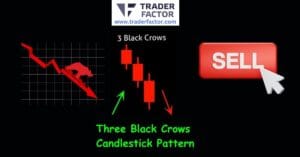One approach that has stood the test of time is the ICT Turtle Soup Strategy in Forex. This strategy provides an effective way to capitalize on market reversals by leveraging false breakouts and specific price action patterns. This guide will walk you through the essentials of the Turtle Soup Strategy in Forex, explain how to spot trading opportunities, and offer practical tips to maximize your winning trades while minimizing risks.
If you’ve been searching for ways to elevate your Forex trading skills or understand reversal and continuation trading strategies, you’re in the right place. By the end of this guide, you’ll not only know how to use the Turtle Soup Strategy in Forex but also how to adapt it to different market conditions for greater success.

Table of Contents
ToggleWhy the ICT Turtle Soup Strategy in Forex Works
The Concept of Turtle Soup in Trading
At its core, the Turtle Soup trading strategy is built on the idea of identifying market behavior around key support and resistance levels. The goal is to catch price reversals by spotting short-term breakouts that ultimately fail. These false breakouts often occur when liquid markets pull traders into one direction before reversing sharply into another.
This strategy offers opportunities across various instruments, including Forex and commodities like gold. It can be highly effective in a ranging market model, where prices bounce between defined levels rather than trending in a single direction.
The Historical Influence of the Turtle Soup ICT Approach
The Turtle Soup ICT PDF and resources like the Turtle Soup trading book explain the origins and principles behind this strategy. Influenced by the early “turtle” trader experiments, this method highlights how traders can gain an edge with disciplined execution around specific setups. Modern tools, like the ICT Turtle Soup Indicator and platforms like ICT Turtle Soup on TradingView, offer helpful ways to spot these patterns systematically.
Is ICT Turtle Soup Strategy Profitable?
Yes, the Turtle Soup strategy can be profitable, but its success depends on multiple factors like market conditions, your trading skill, and effective risk management. This strategy is designed to exploit false breakouts, a common occurrence in liquid markets, allowing you to enter trades when the price quickly reverses from false moves. By identifying these reversals and using proper execution techniques, traders can achieve favorable risk-to-reward ratios.
To maximize profitability, you need to sharpen your ability to identify false breakouts accurately. This means paying close attention to price action and how it behaves near support and resistance zones. False breakouts often happen when the market momentarily breaches a key level before reversing direction. Recognizing these movements requires practice and a keen eye for market structure.
However, profitability isn’t guaranteed and relies on disciplined trading. Setting stop-loss levels is essential to manage risk. Without proper risk management, any potential profits can quickly turn into losses. Additionally, this strategy is more likely to work in trending or ranging markets, so selecting the right market conditions is crucial. When executed with precision and used consistently, the Turtle Soup strategy can help traders find opportunities for winning trades while minimizing losses.
Step-by-Step Guide to Using the Turtle Soup Strategy in Forex
Spotting Support and Resistance Zones
Understanding Key Levels in Price Action
To succeed with the Turtle Soup strategy in Forex, your first step is to mark out zones of support and resistance. These are areas where the price has historically reversed or paused. Identifying these levels is critical because they provide the launching points for potential winning trades.
Look for horizontal zones where price clusters, repeatedly touching but failing to break through. Tools like ICT Turtle Soup Indicator can help pinpoint these levels, but you can also spot them through simple observation of historical price action on your charts.
Why Support and Resistance Play a Central Role
Support zones signify where buying pressure keeps the price from falling further. Resistance zones reflect the opposite, where selling pressure prevents the price from rising. For the Turtle Soup trading strategy, keep your focus on areas where these levels appear strong. Sudden breakouts through these zones are prime candidates for false breakouts, which is the bread and butter of this strategy.
False Breakouts
Identifying False Breakouts in Forex
False breakouts are a common occurrence in trading and can be both a challenge and an opportunity. Essentially, a false breakout happens when the price of an asset moves beyond a significant level of support or resistance, giving the impression that it will continue in that direction. However, instead of sustaining the move, the price quickly reverses and falls back into its previous range. This reversal often catches traders off guard, especially those who entered trades expecting a breakout to hold.
Why do false breakouts happen? They are often the result of market psychology and liquidity. Large players in the market, such as institutional traders, may push the price beyond a key level to trigger stop-loss orders or entice retail traders to enter positions. Once these traders are “trapped,” the price reverses, leaving them in losing positions. This creates an opportunity for savvy traders to capitalize on the reversal by entering trades in the opposite direction.

For beginners, identifying false breakouts can feel daunting at first. However, with time and experience, you can learn to recognize the signs. Look for clues such as a lack of strong volume accompanying the breakout or quick rejections at key levels. Observing how the price behaves around support and resistance zones is crucial. Over time, as you practice and refine your skills, spotting false breakouts will become a valuable tool in your trading arsenal.
False Breakouts as the Gateway to a Reversal Trade
The false breakout’s reversal often aligns with significant market volume shifts. These moments present great setups for short-term trades. Pay attention to the candlestick patterns and the relative position of the breakout compared to previous highs or lows.
Market Structure Shift
Reading Shifts in Market Behavior
A market structure shift is when the price transitions from trending in one direction to a new pattern, such as moving from an uptrend to a range. Recognizing this is vital when using the Turtle Soup strategy in Forex.
Look for abandoned candlestick wicks or failing breakouts as signs that the market structure is about to shift. The Turtle Soup Trading Pattern often manifests during these transitions as the market loses momentum in one direction and reverses.
Market Structure and Ranging Market Models
Many traders find the Turtle Soup effective within a ranging market model, where the price oscillates between highs and lows. Keep an eye out for sharp, fake breakouts that trigger stop runs before reversing.
Executing the Trade
Entry Strategies for Turtle Soup in Forex
Once you’ve identified a false breakout, you’ll set up a pending trade that goes in the opposite direction of the initial breakout. Timing is everything here. Enter the trade as soon as the price shows signs of reversing, using the extreme level of the false breakout as your reference point.
What is the Timeframe for Turtle Soup?
The best timeframe for the Turtle Soup Strategy depends on your trading style. Day traders might use smaller timeframes like 15 minutes, while swing traders may prefer the 4-hour or daily charts. Test different timeframes to find what works best for spotting and entering trades.
Manage Risk by Setting Stop Loss
Placing a Strategic Stop Loss
Risk management is the backbone of successful trading. Always use a stop loss to cap your potential losses. For the Turtle Soup strategy, the stop loss is typically placed just beyond the extreme point of the false breakout.
Winning Trades vs. Losing Trades
This strategy offers an appealing risk-to-reward ratio because even if you experience some losing trades, the profitable ones typically compensate for them. By setting a clear take profit target based on the prior price action, you can lock in gains consistently.
Adapting the Turtle Soup Strategy in Forex for Other Markets
Turtle Soup Strategy for Gold
The Turtle Soup Strategy Gold Free resources show how this setup translates well to the gold market. Gold, being a highly liquid asset, offers numerous opportunities for reversal setups based on false breakouts.
The Utility of Turtle Soup for Ranging Markets
Whether you’re trading Forex or commodities, the Best Turtle Soup Strategy Gold principles remain the same. Look for false breakouts near key levels, enter with a reversal bias, and manage risk diligently.

Is Turtle Soup Similar to ICT Judas Swing Strategy?
The Turtle Soup strategy and the Judas Swing are two distinct approaches in Forex trading, each with its own unique features and objectives. While they may appear similar to the untrained eye, as both involve reversals and false breakouts, they differ significantly in their execution and the concepts they focus on.
The Turtle Soup strategy is centered around identifying false breakouts at key support and resistance levels. The goal is to capitalize on moments when the price seems to break out but reverses sharply back into its previous range, trapping traders who expected the breakout to hold. This strategy is particularly effective in liquid markets and thrives in ranging market conditions. Success with the Turtle Soup strategy depends on your ability to spot these false breakouts using price action analysis.
On the other hand, the Judas Swing strategy is often associated with intraday trading and focuses on trapping traders during the early part of a trading session. It involves a quick, deceptive price move designed to lure traders into taking positions that align with the apparent trend. Once the “trap” is set, the price violently reverses, catching the majority of traders off-guard. This approach aims to exploit liquidity grabs and often aligns with market manipulation patterns.

While both strategies deal with false moves and reversals, the Turtle Soup emphasizes identifying false breakouts within established ranges, whereas the Judas Swing revolves around exploiting early-session traps. Understanding these differences is key to deciding which approach aligns better with your trading style and objectives. Both require practice, discipline, and a solid understanding of market dynamics to execute effectively.
Final Thoughts on Turtle Soup Strategy in Forex
Mastering the Turtle Soup Strategy in Forex doesn’t happen overnight, but with practice and patience, it can become a reliable tool in your trading arsenal. By focusing on identifying false breakouts, leveraging key support and resistance zones, and managing trades with discipline, you can gradually improve both your confidence and profitability in Forex.
Remember, whether you’re analyzing the Turtle Soup ranging market model, using the ICT Turtle Soup TradingView tools, or fine-tuning your approach based on insights from the Turtle Soup Strategy Forex PDF Free Download, the key is to remain consistent. Stick to your trading plan and take the time to evaluate both your winning trades and losing trades for continuous improvement.
Disclaimer:
All information has been prepared by TraderFactor or partners. The information does not contain a record of TraderFactor or partner’s prices or an offer of or solicitation for a transaction in any financial instrument. No representation or warranty is given as to the accuracy or completeness of this information. Any material provided does not have regard to the specific investment objective and financial situation of any person who may read it. Past performance is not a reliable indicator of future performance.
















